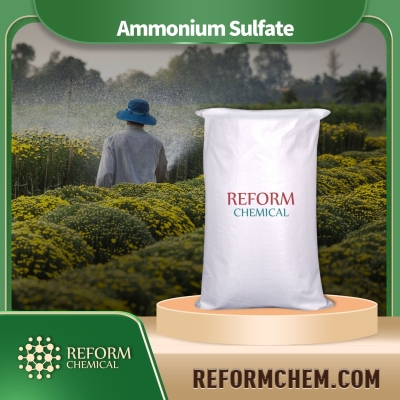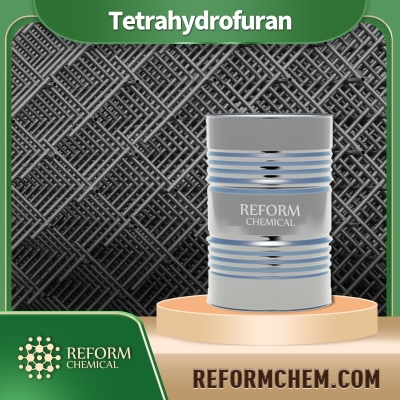-
Categories
-
Pharmaceutical Intermediates
-
Active Pharmaceutical Ingredients
-
Food Additives
- Industrial Coatings
- Agrochemicals
- Dyes and Pigments
- Surfactant
- Flavors and Fragrances
- Chemical Reagents
- Catalyst and Auxiliary
- Natural Products
- Inorganic Chemistry
-
Organic Chemistry
-
Biochemical Engineering
- Analytical Chemistry
-
Cosmetic Ingredient
- Water Treatment Chemical
-
Pharmaceutical Intermediates
Promotion
ECHEMI Mall
Wholesale
Weekly Price
Exhibition
News
-
Trade Service
Since the second half of 2016, product prices in the pesticide industry have ushered in a wave of price increases
.
Some believe that the demand-side international agrochemical giants replenishing inventory and the supply-side high-pressure environmental protection situation are the main driving factors for this round of price increases
.
With the transfer of global pesticide production capacity to China, the pesticide industry is expected to recover in 2017
.
The price rebound of pesticide products was affected by the continuous decline in the price of crude oil at the cost end and the prices of downstream agricultural products, as well as the high inventory of multinational agrochemical giant distributors.
Since 2014, the global demand for pesticide products has weakened, and the market has continued to decline
.
Statistics released by Phillips McDougall show that in 2015, global pesticide sales achieved total sales of 57.
522 billion U.
S.
dollars, a year-on-year decrease of 9.
0%
.
Among them, the crop pesticide market achieved sales of 51.
210 billion U.
S.
dollars, down 9.
6% year-on-year; non-crop pesticides achieved sales of 6.
312 billion U.
S.
dollars, down 3.
6% year-on-year
.
In 2015, the domestic pesticide market was polarized
.
The main business income of the national pesticide industry reached 310.
72 billion yuan, a year-on-year increase of 5.
1%; the total profit was approximately 22.
56 billion yuan, a year-on-year increase of 1.
7%
.
However, during the same period, the number of loss-making pesticide companies across the country increased by 32.
1% year-on-year, and their losses increased by 53.
8% year-on-year.
The loss area rose from 6.
6% to 8.
9%
.
However, since the second half of 2016, the prices of pesticide products have rebounded
.
According to different control objects, pesticides are mainly divided into three categories: herbicides, insecticides and fungicides
.
Among them, glyphosate is the most important herbicide species
.
Statistics show that as of March 2017, the domestic price of glyphosate was about 22,500 yuan/ton, an increase of 5,000 yuan/ton from the same period in 2016, an increase of about 28.
57%; among them, the price of glyphosate reached 28.
57% in December 2016.
The high level of 25,200 yuan/ton; in the same period, the domestic price of glufosinate-ammonium rose from 110,000 yuan/ton to 170,000 yuan/ton, a year-on-year increase of 54.
55%
.
Among pesticides, acetamiprid rose from 90,000 yuan/ton to 172,500 yuan/ton, an increase of about 91.
67%; imidacloprid rose from 98,500 yuan/ton to 162,500 yuan/ton, an increase of about 64.
97%; fluorine Tetranil increased from 350,000 yuan/ton to 575,000 yuan/ton, an increase of approximately 64.
29%
.
According to statistics from the China Pesticide Industry Association, in January 2017, the China Pesticide Price Index (CAPI) was 78.
44, an increase of 5.
48% month-on-month and 7.
83% year-on-year; in February, CAPI rose to 80.
58, an increase of 2.
73% month-on-year and a year-on-year increase 12.
25%
.
Along with product prices, the performance of some listed companies has rebounded
.
.
Some believe that the demand-side international agrochemical giants replenishing inventory and the supply-side high-pressure environmental protection situation are the main driving factors for this round of price increases
.
With the transfer of global pesticide production capacity to China, the pesticide industry is expected to recover in 2017
.
The price rebound of pesticide products was affected by the continuous decline in the price of crude oil at the cost end and the prices of downstream agricultural products, as well as the high inventory of multinational agrochemical giant distributors.
Since 2014, the global demand for pesticide products has weakened, and the market has continued to decline
.
Statistics released by Phillips McDougall show that in 2015, global pesticide sales achieved total sales of 57.
522 billion U.
S.
dollars, a year-on-year decrease of 9.
0%
.
Among them, the crop pesticide market achieved sales of 51.
210 billion U.
S.
dollars, down 9.
6% year-on-year; non-crop pesticides achieved sales of 6.
312 billion U.
S.
dollars, down 3.
6% year-on-year
.
In 2015, the domestic pesticide market was polarized
.
The main business income of the national pesticide industry reached 310.
72 billion yuan, a year-on-year increase of 5.
1%; the total profit was approximately 22.
56 billion yuan, a year-on-year increase of 1.
7%
.
However, during the same period, the number of loss-making pesticide companies across the country increased by 32.
1% year-on-year, and their losses increased by 53.
8% year-on-year.
The loss area rose from 6.
6% to 8.
9%
.
However, since the second half of 2016, the prices of pesticide products have rebounded
.
According to different control objects, pesticides are mainly divided into three categories: herbicides, insecticides and fungicides
.
Among them, glyphosate is the most important herbicide species
.
Statistics show that as of March 2017, the domestic price of glyphosate was about 22,500 yuan/ton, an increase of 5,000 yuan/ton from the same period in 2016, an increase of about 28.
57%; among them, the price of glyphosate reached 28.
57% in December 2016.
The high level of 25,200 yuan/ton; in the same period, the domestic price of glufosinate-ammonium rose from 110,000 yuan/ton to 170,000 yuan/ton, a year-on-year increase of 54.
55%
.
Among pesticides, acetamiprid rose from 90,000 yuan/ton to 172,500 yuan/ton, an increase of about 91.
67%; imidacloprid rose from 98,500 yuan/ton to 162,500 yuan/ton, an increase of about 64.
97%; fluorine Tetranil increased from 350,000 yuan/ton to 575,000 yuan/ton, an increase of approximately 64.
29%
.
According to statistics from the China Pesticide Industry Association, in January 2017, the China Pesticide Price Index (CAPI) was 78.
44, an increase of 5.
48% month-on-month and 7.
83% year-on-year; in February, CAPI rose to 80.
58, an increase of 2.
73% month-on-year and a year-on-year increase 12.
25%
.
Along with product prices, the performance of some listed companies has rebounded
.






